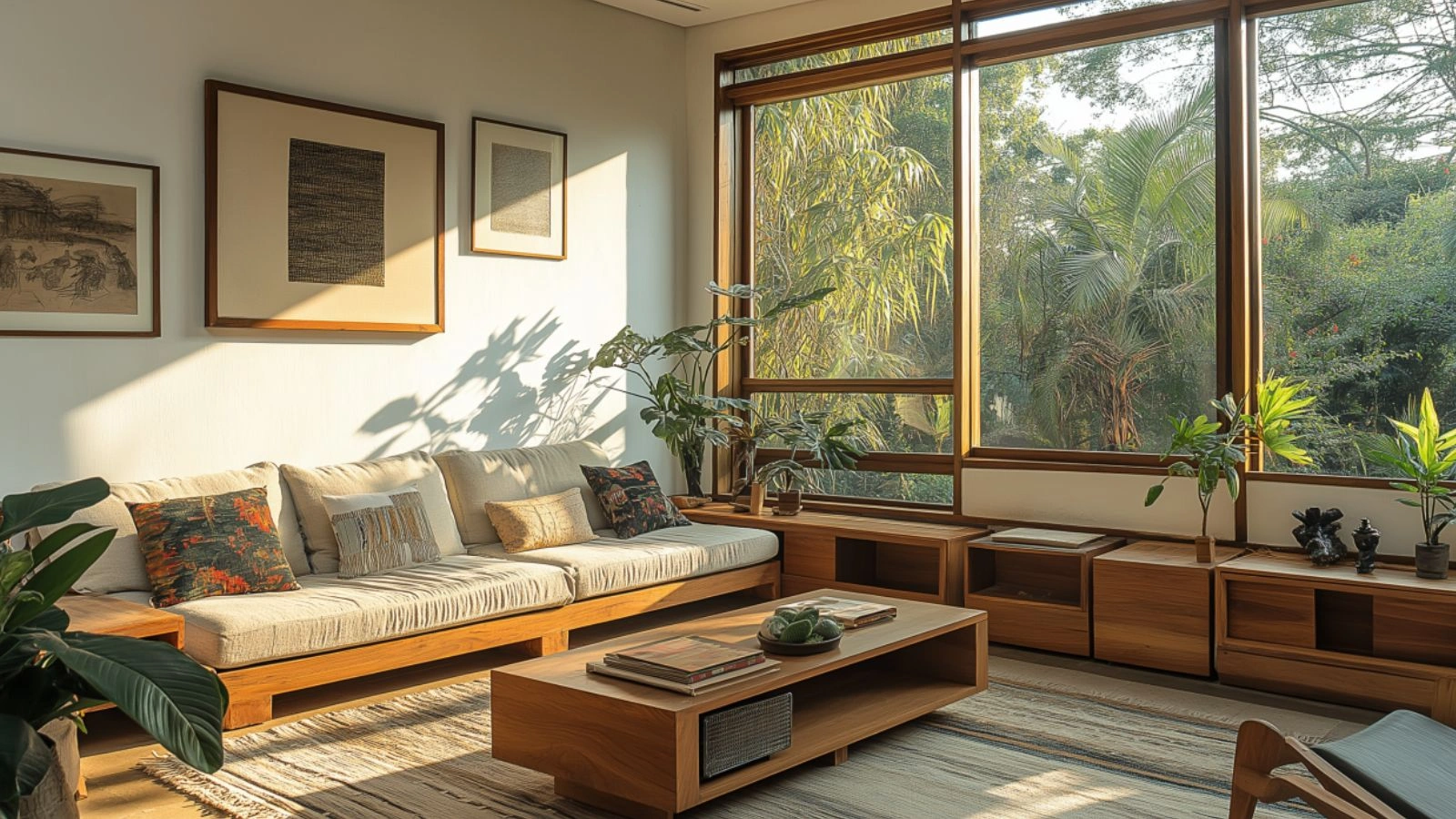The Art of Japandi Interiors: Where Simplicity Meets Comfort in Modern Living Room Design
Table of Contents
Minimalism meets warmth. That’s the essence of Japandi interior design—a rising trend that harmoniously fuses Japanese zen aesthetics with Scandinavian coziness. According to Pinterest Predicts and interior trend reports, searches for “Japandi living room ideas” have seen a 130% increase in the past year alone, reflecting a growing global desire for calm, intentional living spaces.
Japandi is more than a design trend—it’s a philosophy rooted in balance. It strips away clutter without sacrificing comfort. It prioritizes quality over quantity. It is, in many ways, a response to our overstimulated, fast-paced world—a design language that whispers instead of shouts.
In this article, we’ll explore how Japandi interiors redefine living room spaces through simplicity, natural materials, and a muted color palette. You’ll learn how to incorporate Japandi principles into your space while maintaining functionality and comfort. From furniture selection and color harmony to lighting and textural layers, every section offers practical insights to help you craft a tranquil yet stylish home sanctuary.
Understanding the Core Principles of Japandi Design
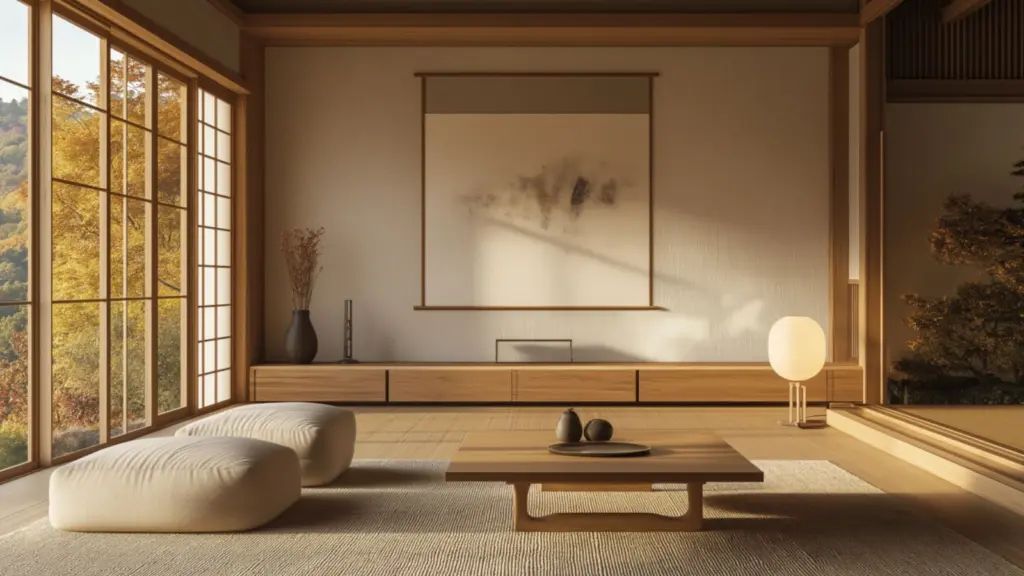
At the heart of Japandi interiors lies a deep appreciation for form, function, and feeling. The aesthetic combines the Japanese principle of wabi-sabi—the beauty of imperfection—with the Scandinavian concept of hygge, which embraces coziness and contentment.
This fusion results in spaces that are uncluttered, calming, and carefully curated. The focus isn’t on ornate details but on harmony, craftsmanship, and meaningful living. Every piece should serve a purpose—whether functional, emotional, or visual.
Core Japandi Principles Table
| Design Principle | Japanese Influence | Scandinavian Influence |
|---|---|---|
| Minimalism | Zen-inspired simplicity | Clean lines and decluttering |
| Nature & Organic Forms | Natural woods, earthy tones | Light woods, soft textures |
| Functionality | Thoughtful use of space | Multi-use furniture |
| Comfort | Tatami mats, low seating | Cozy throws, warm lighting |
Curating a Japandi Living Room Color Palette
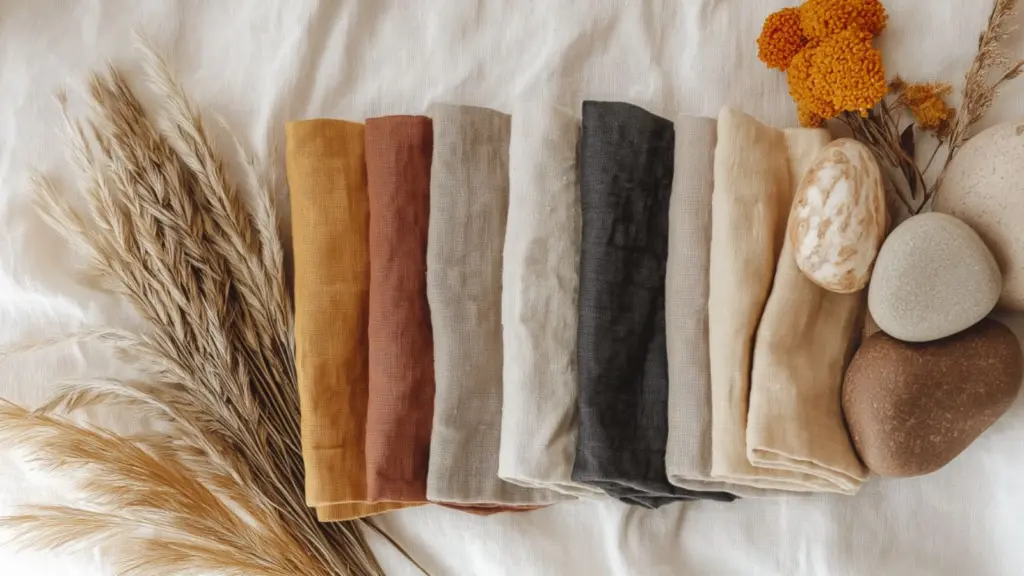
Japandi interiors are known for their calm, grounded palette. Colors are typically soft, neutral, and inspired by nature—think earthy browns, stone grays, warm whites, and dusty beiges. Occasionally, subtle pops of muted green or deep blue add visual interest without disrupting the serenity.
This restrained color approach creates cohesion and allows textures and forms to shine. Avoid anything overly saturated or stark—Japandi prefers colors that are quiet and timeless.
Japandi Color Palette Breakdown
| Color Category | Common Shades Used | Visual Effect |
|---|---|---|
| Base Neutrals | Warm white, soft beige, greige | Calming and spacious |
| Natural Accents | Sand, driftwood, taupe | Earthy, organic tone |
| Contrast Colors | Charcoal, slate gray, muted black | Grounding, adds depth |
| Subtle Highlights | Sage green, indigo, rust | Small touches of warmth or color |
Furniture Selection: Low, Linear, and Lightweight
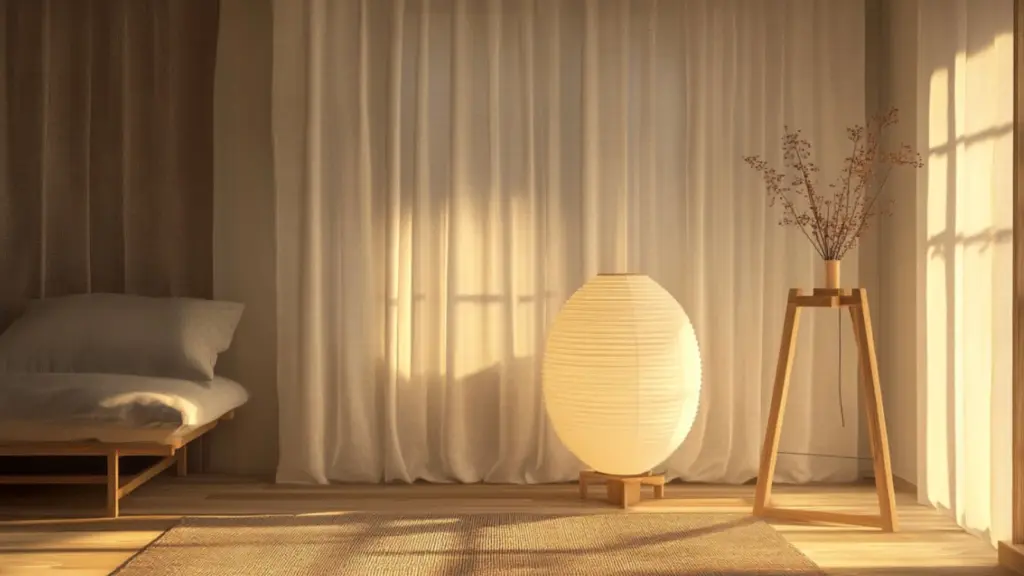
Japandi furniture embraces clean lines and low profiles. Think sleek wood-framed sofas, armless chairs, and tables with tapered legs. Pieces are visually light—often elevated off the floor to keep the room feeling open and airy.
Avoid bulky, overstuffed furniture or anything too ornate. Japandi style prizes well-crafted, multifunctional pieces that blend form and utility. Materials like oak, walnut, rattan, or bamboo are popular choices.
Japandi Furniture Features
| Furniture Type | Key Characteristics | Suggested Materials |
|---|---|---|
| Sofa | Low seat, firm cushion, minimal design | Linen upholstery, light wood frame |
| Coffee Table | Round or rectangular, simple silhouette | Oak, ash, or matte black metal |
| Storage | Closed cabinets, hidden compartments | Plywood, solid wood |
| Seating | Poufs, floor cushions, armless chairs | Cotton, rattan, linen |
Textures and Layers: Achieving Visual Warmth in a Minimal Space
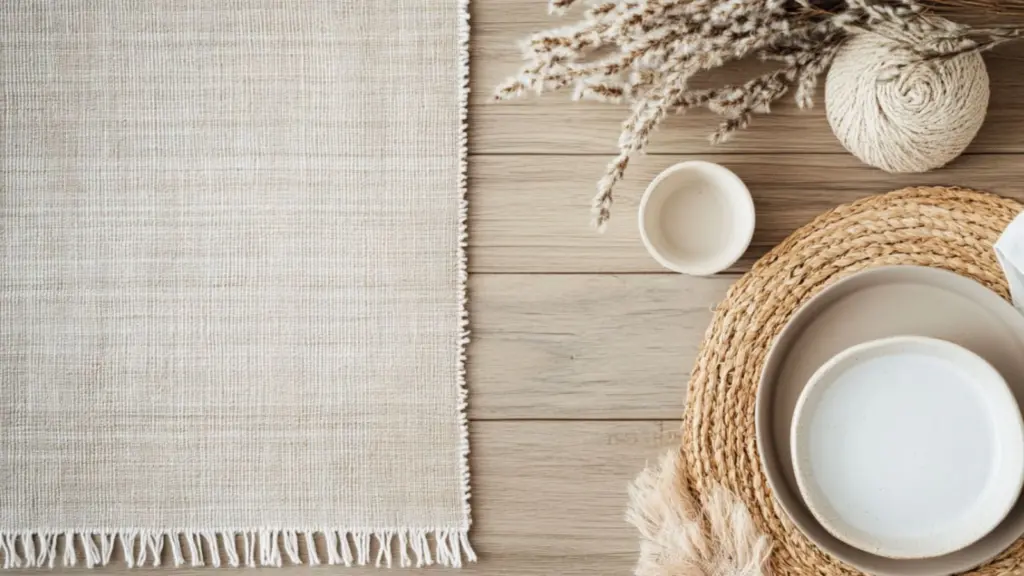
Though Japandi interiors are minimalist, they are never cold. The secret? Layers of organic texture. By incorporating tactile elements—wool, cotton, linen, ceramics, and soft woods—you can add richness without visual clutter.
A woven jute rug anchors the space. A crinkled linen throw draped over a wood-framed chair introduces softness. Handmade pottery and matte ceramics add handcrafted charm. The key is restraint: combine texture thoughtfully and keep surfaces tidy.
Texture Layering Tips
| Texture Type | Examples | Placement Idea |
|---|---|---|
| Soft Textiles | Linen, cotton, boucle | Throws, cushions, window dressings |
| Natural Fibers | Jute, sisal, hemp | Rugs, baskets, pendant lighting |
| Matte Ceramics | Stoneware, terracotta | Decorative bowls, vases |
| Wood Grains | Light-stained or natural-finished | Coffee tables, shelving, flooring |
Lighting in Japandi Interiors: Natural, Ambient, and Low-Key
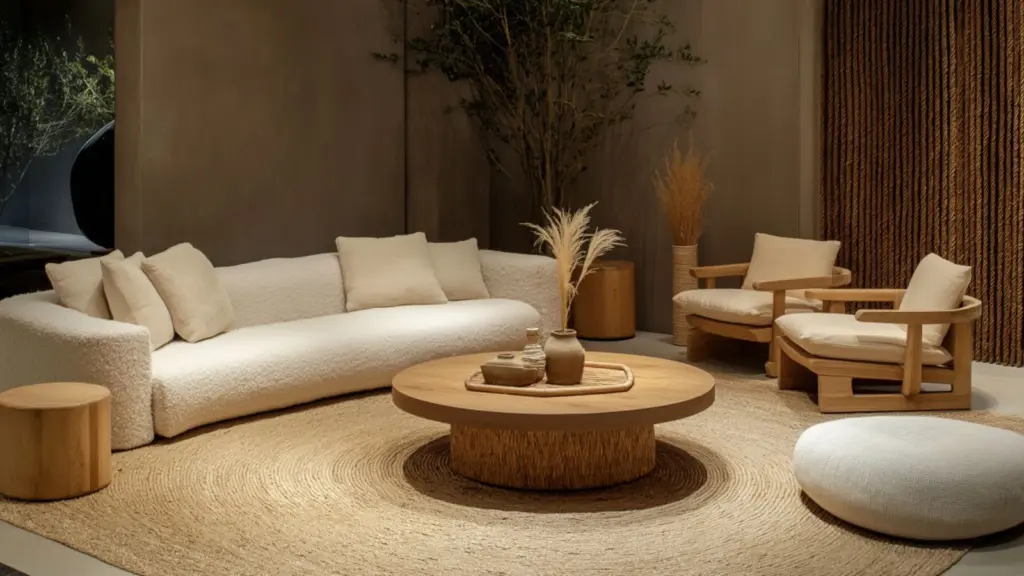
Japandi lighting is subtle yet purposeful. It relies on ambient layers, often using natural light as the foundation. Sheer curtains allow sunlight to diffuse, while warm-toned LED lights enhance the atmosphere as daylight fades.
Fixtures are clean and functional. Paper lanterns, rattan pendants, wall sconces, or floor lamps in wood or matte black finishes work well. Avoid overly decorative or crystal-heavy fixtures; instead, prioritize lighting that feels calming and sculptural.
Japandi Lighting Layers
| Lighting Layer | Fixture Type | Purpose and Feel |
|---|---|---|
| Natural Light | Windows with linen or cotton drapes | Daytime ambiance |
| Overhead Lighting | Woven pendants, recessed fixtures | General illumination |
| Accent Lighting | Wall sconces, picture lights | Highlight art or textures |
| Task Lighting | Floor lamps, minimalist table lamps | Reading or focused activities |
Decor and Art: Curated, Not Cluttered
In Japandi design, art and decor are chosen with intention. Every object contributes to the overall harmony of the space. Less is always more.
Wall art is minimal—often a single abstract print, a line drawing, or calligraphy on natural paper. Accessories are sculptural and organic, like a hand-carved wooden bowl or an asymmetrical vase with a sprig of greenery. The goal is to create visual interest through form, not quantity.
Japandi Decor Essentials
| Decor Element | Characteristics | Ideal Placement |
|---|---|---|
| Wall Art | Neutral-toned, abstract, minimal | One large frame or small groupings |
| Organic Objects | Driftwood, stone, handmade pottery | Coffee table, sideboard, shelf |
| Greenery | Monstera, dried branches, bonsai | Corner floor pots or small vases |
| Books and Textiles | Neutral covers, folded neatly | Display in open shelving or baskets |
Balancing Functionality with Aesthetic Simplicity
Japandi interiors prioritize not only how a space looks, but how it works. In the living room, this means incorporating hidden storage, multifunctional furniture, and thoughtful layouts that support daily life without disrupting visual calm.
Consider built-in shelving with concealed compartments. Choose a coffee table that doubles as storage or seating. Keep tech elements like speakers and remotes hidden or streamlined.
Functional Design Strategies
| Living Room Feature | Functional Japandi Solution | Benefit |
|---|---|---|
| Storage | Hidden drawers, wall-mounted shelves | Reduces visual noise |
| Media Setup | Wood-paneled units or closed consoles | Keeps electronics discreet |
| Multifunctional Items | Storage ottomans, nesting tables | Maximizes small-space utility |
| Layout Design | Low-profile, centered furniture | Enhances flow and openness |
Conclusion
The art of Japandi interiors lies in balance—between softness and structure, tradition and innovation, simplicity and soul. In the living room, this design approach creates a tranquil refuge where everything has purpose and presence. By embracing muted tones, clean lines, and layered textures, you invite peace and mindfulness into your daily life.
Japandi isn’t just about how your living room looks—it’s about how it feels to live in it. With careful choices and intentional design, your space can become both an aesthetic haven and a nurturing, functional environment. A true reflection of modern serenity.

